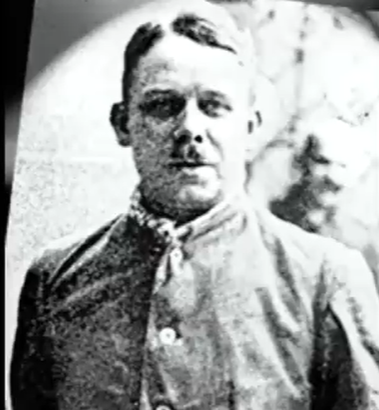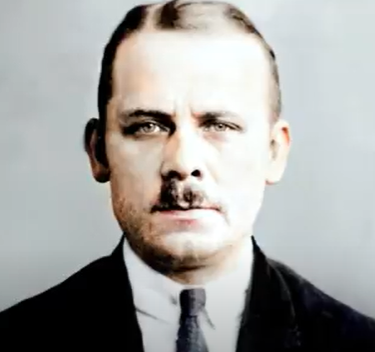.jpg)
1879 - 1925
Friedrich Heinrich Karl Haarmann
Summary
Name:
Nickname:
Fritz / The Butcher of Hanover / The Wolf Man / The Vampire of HanoverYears Active:
1918 - 1924Birth:
October 25, 1879Status:
ExecutedClass:
Serial KillerVictims:
27+Method:
Strangulation / Biting throatDeath:
April 15, 1925Nationality:
Germany.jpg)
1879 - 1925
Friedrich Heinrich Karl Haarmann
Summary: Serial Killer
Name:
Friedrich Heinrich Karl HaarmannNickname:
Fritz / The Butcher of Hanover / The Wolf Man / The Vampire of HanoverStatus:
ExecutedVictims:
27+Method:
Strangulation / Biting throatNationality:
GermanyBirth:
October 25, 1879Death:
April 15, 1925Years Active:
1918 - 1924Date Convicted:
December 19, 1924bio
Friedrich Heinrich Karl "Fritz" Haarmann was born on October 25, 1879, in Hanover, Germany. He was the youngest of six children in his family. His parents were Johanna and Ollie Haarmann. Johanna, who was seven years older than Ollie, came from a wealthy background, which influenced their marriage. Their relationship was not a happy one; Ollie was known to be argumentative and had multiple affairs, which ultimately led to his contracting syphilis.
As a child, Fritz Haarmann was quiet and had few friends. He often avoided playing with other boys and preferred to engage in activities typically associated with girls. He would play with his sisters' dolls and showed a keen interest in needlework and cooking. Haarmann had a close relationship with his mother, who spoiled him. This upbringing significantly shaped his personality.

Haarmann started attending school in 1886. His teachers noted that he was spoiled and would often daydream. While he behaved well in class, his academic performance was below average. He even repeated a school year twice. An incident at school occurred when he was molested by one of his teachers, which he never discussed openly.
As he grew, Haare was physically strong and finished his schooling in 1894. After school, he worked briefly as an apprentice locksmith before deciding to enroll in a military academy at the age of 15. He started his military training in April 1895. Initially, he adapted well to life in the military but later began to experience lapses of consciousness. These episodes were later diagnosed as equivalent to epilepsy. After a few months, he discharged himself from the military and returned to Hanover, where he worked in a cigar factory owned by his father.
At the age of 16, Haarmann committed his first known sexual offenses involving young boys. This led to his arrest in July 1896. After further offenses, he was sent to a mental institution in February 1897. A psychologist deemed him incurably deranged. He escaped the institution in January 1898 with help from his mother and fled to Zürich, Switzerland, where he lived with a relative and worked as a handyman.

Haarmann returned to Hanover in April 1899 and became engaged to a woman named Erna Loewert, who soon became pregnant. He received a notice for his compulsory military service in October 1900. Haarmann served his time well and enjoyed his experience in the military. However, he was later deemed unfit for service and discharged in July 1902 due to health issues.
After leaving the military, Haarmann briefly lived with his fiancée and continued to work at his father's cigar factory. However, conflicts with his father led Haarmann to file a maintenance lawsuit, which was ultimately dropped. His relationship with his father became increasingly strained, leading to a violent confrontation in which his father attempted to place Haarmann in a mental institution. Despite these issues, Haarmann and his fiancée opened a fishmongery with her financial support.
murder story
Friedrich Heinrich Karl "Fritz" Haarmann is known for a series of murders committed between 1918 and 1924 in Hanover, Germany. He is believed to have killed at least 24 young men and boys, although some estimates suggest the number could be higher. Haarmann targeted males aged 10 to 22, often luring them to his apartment with promises of assistance or work.
His first known victim was Friedel Rothe, a 17-year-old runaway, who disappeared in September 1918. Haarmann later claimed he had buried Rothe. He faced charges for the sexual assault of a minor in October of that same year when police found him with a young boy in his apartment. After serving a brief prison sentence, he returned to a life of crime.
Haarmann's method of killing involved biting into his victims' necks, which he referred to as his "love bite." Many victims died from asphyxiation. After killing, Haarmann dismembered the bodies before disposing of the remains, often in the Leine River. Some victims' personal belongings were kept or sold by Haarmann.

Police began to suspect Haarmann in 1924 when human remains were discovered near the river and linked to missing persons cases from the area. He was placed under surveillance and was arrested after being seen arguing with a 15-year-old boy. Upon searching his apartment, investigators found bloodstains and belongings belonging to several missing youths.
During his interrogation, Haarmann confessed to multiple murders, asserting that he was driven by an uncontrollable urge when attacking the victims. He described the process of dismemberment and the disposal of body parts in detail, indicating that he found the act of dismemberment unpleasant but felt compelled to do it.
After extensive investigations, he was charged with 27 murders, later reduced to 24 during his trial. His trial became a media sensation, and Haarmann readily admitted to several murders but denied any premeditation. On December 19, 1924, he was convicted and sentenced to death.
Haarmann was executed by guillotine on April 15, 1925. His case spurred significant discourse in Germany about criminal investigation procedures and societal attitudes toward homosexuality, which was heavily stigmatized at the time. After his death, a communal grave was established for his victims, and his actions continue to be a point of discussion in the context of crime and law enforcement.